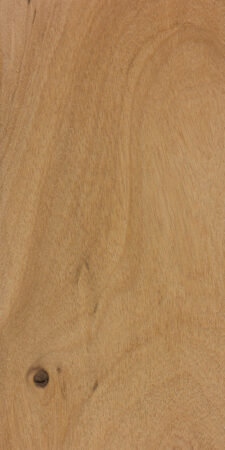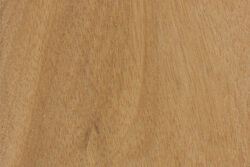
Common Name(s): Aglaia, amoora, bekak
Distribution: Tropical regions in Southeast Asia and Pacific Islands
Genus Size: Just over 100 species (with over 300 additional species treated as synonyms)
Mechanical Characteristics: Generally medium to moderately heavy dried weight, with decent strength characteristics for a hardwood. Lumber can have a tendency to warp or deform during initial drying, although dimensional stability is good once dry.
Visual Characteristics: Ranges in color from light brown to darker reddish brown. Heartwood color is usually linked to density—heavier pieces tend to be darker in color. Grain is interlocked, giving quartersawn surfaces a ribbon-stripe grain appearance. Overall appearance resembles mahogany.
Identification: Aglaia species bear a resemblance to genuine mahogany (Swietenia macrophylla) and they are actually botanically related—both woods being in the Meliaceae family. Aglaia species can be separated from most mahoganies based on its fragrant heartwood scent and banded (never marginal) parenchyma.
Comments: Aglaia species can vary greatly in density, from some of the lightest hardwoods, to those that sink in water (in excess of 1,000 kg/m3). However, species harvested and used commercially fall toward the middle of the spectrum, with most Aglaia timber being in the range of 600-800 kg/m3. The wood has good workability, though sometimes a little more care must be taken to avoid tearout or machining defects on interlocked grain on the heavier pieces.
Many species of Aglaia are mixed together based on weight, and often they are sold under regional common names with little attempt to identify the exact species. The names for the lumber are as varied as the number of regions the trees grow. Besides borrowing from the genus name itself (simply calling the wood aglaia, or the name of the former genus, amoora), the wood has been called parak in Indoniesia, bekak in Malaysia, makaasim in the Phillippines, tasua in Thailand, and so forth.
Related Content:







